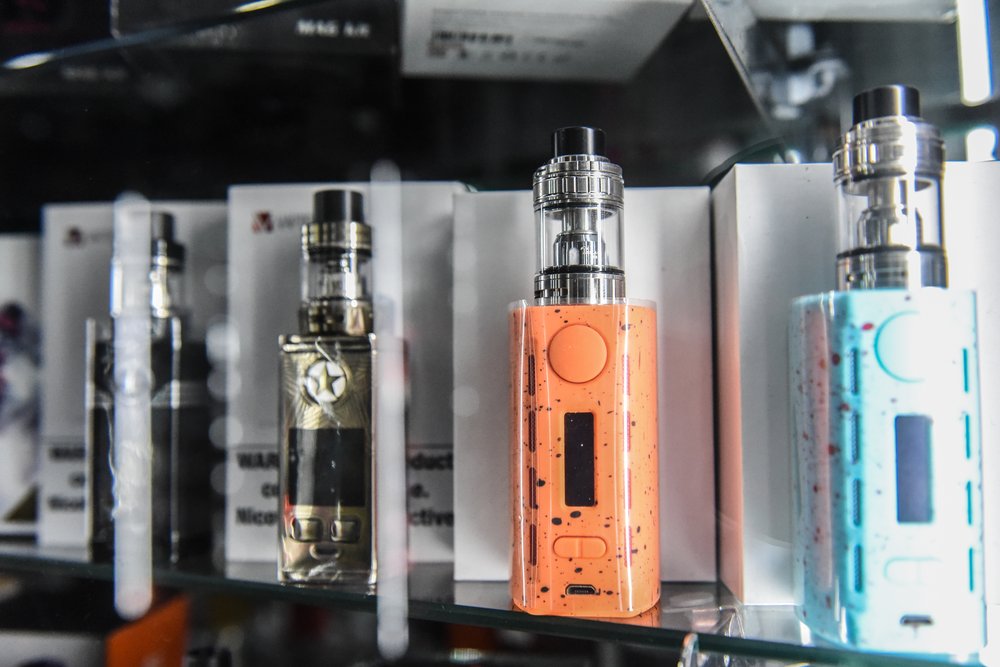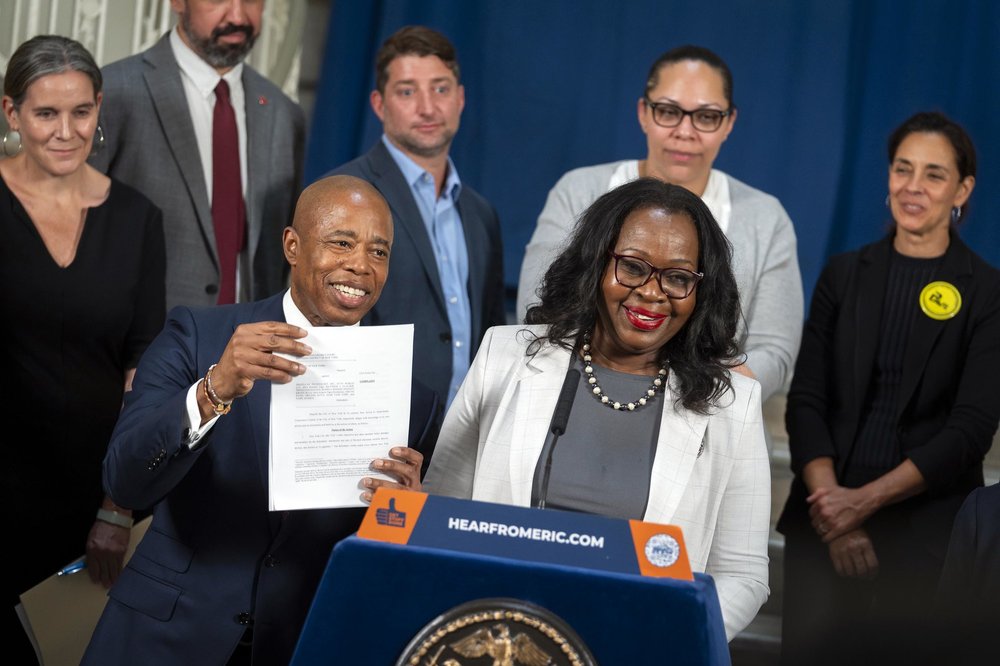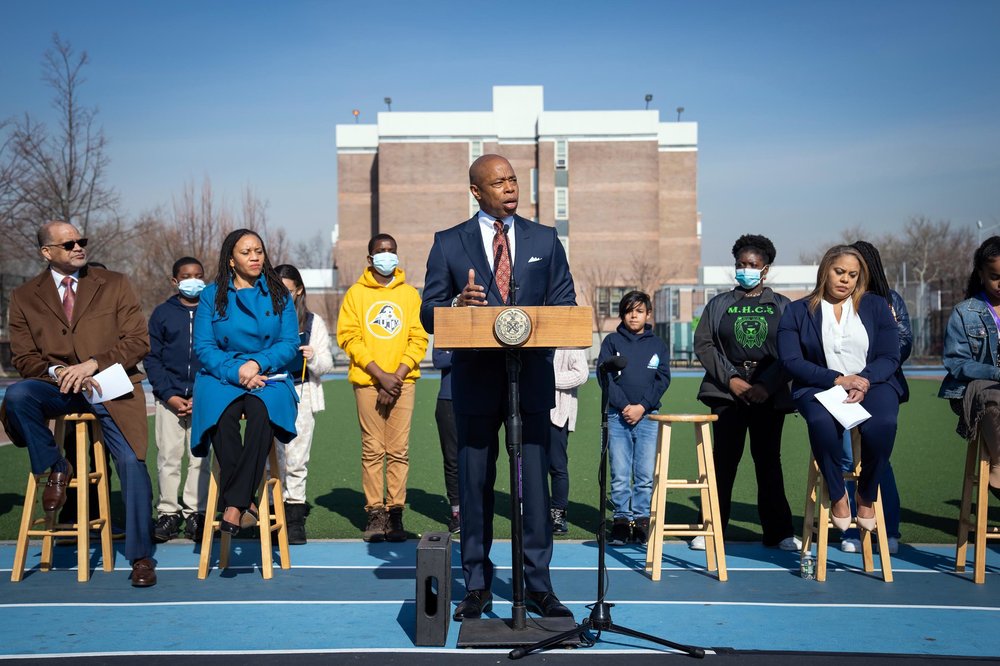NYC schools are getting $282K grant to help stop kids from vaping
Nov. 2, 2023, 5 a.m.
The investment comes as the city appears to be making progress toward reducing teen vaping rates, but adolescent e-cigarette use remains a major public health concern statewide.

New York City public schools will receive funding from the New York Health Foundation to expand a program designed to stop kids from vaping, the Department of Education announced on Thursday. The investment comes as the city appears to be making progress toward reducing teen vaping rates, but adolescent e-cigarette use remains a major public health concern statewide.
The program, known as CATCH My Breath, trains educators in an evidence-based vaping curriculum and has already been adopted in some city schools since 2018, albeit without dedicated local funding. The initiative is run by the Catch Global Foundation, a Texas-based school health education nonprofit supported by CVS Health.
The new $282,000 grant will allow CATCH to train up to 315 health educators in up to 180 middle and high schools over three years on how to teach kids about the risks of vaping in an engaging way, according to the NYC Department of Education. Starting next spring, the city will also offer students a chance to participate in service learning projects around vaping and invite them to enter a citywide anti-vaping public service announcement contest.
A 2020 study published in Public Health Reports found that Texas middle school students who participated in the CATCH program were more knowledgeable about e-cigarettes and less likely to try vaping over the next 16 months than those who did not participate. During the study period, the share of children at CATCH schools who tried vaping increased from 2.8% to 4.9%, while there was a jump from 2.7% to 8.9% among a control group of schools without the program. There hasn’t been a similar study yet on the curriculum's effectiveness in the New York City schools that have adopted it so far.
“After years of declining cigarette use, a new generation is at risk of becoming addicted to nicotine through vape products,” David Sandman, president and CEO of the New York Health Foundation, said in an emailed statement on Thursday. “We need to stop unhealthy addictions before they start.”
Young people are now far more likely to vape than smoke cigarettes, according to data from the High School Youth Risk Behavior Survey conducted by the U.S. Centers for Disease Control and Prevention, but there are signs that New York City is making progress in reversing the e-cigarette trend. In 2021, 11% of New York City high school students reported they had vaped in the past month, down from 15% in 2019 and 17% in 2017. The 2021 rate still represented more than 1 in 10 New York City high school students, but it was lower than the national rate of 18%.
Just 2.2% of New York City high school students surveyed in 2021 said they had smoked a cigarette in the last month.
The dip in 2021 may also have been due to COVID-related issues with data collection, since the CDC conducted the survey shortly after students returned to in-person classes, said Achala Talati, the director of tobacco policy and programs at the city's health department. She said the city’s progress on reducing youth vaping will become more apparent when data from the next biannual survey is released in 2025. (The CDC releases the data on a two-year lag.)

In the meantime, the Adams administration is working to bolster its prevention efforts. But education on vaping varies from school to school.
Vaping is a major issue among students at East Side Community High School in the East Village, where smoke shops are plentiful, said Chris Osorio, the school’s dean.
“They're vaping everywhere,” he said. “They’re vaping in school, they're vaping on buses, they're vaping at dismissal.”
Osorio said his school has mostly dealt with e-cigarette use on campus as a disciplinary issue that typically results in detention. But he said teachers are now developing a lesson on the harms of vaping that students will have to complete during that detention. He added that, unlike some New York public schools, East Side Community does not have a dedicated substance abuse prevention and intervention specialist, or SAPIS, and lacks a formal curriculum on vaping.
“I don't have to preach to you about just how overworked teachers are already, so any support from the city, where there is a curriculum that is already built that we can tweak if need be, would be super, super helpful,” Osorio said.
Olivia Carryl, a junior at a Brooklyn high school, said she was taught about the risks of vaping in health class. She said she found the lessons impactful, but that some of her peers do it anyway.
“Everywhere I go, somebody vaping,” Carryl said. “We be in school, they vaping. It's not as OD now because they more heavy on us.”
She said students stopped vaping as much in the bathroom or near the school after they started getting in trouble more frequently.

The city health department has worked with schools to tailor the national CATCH curriculum to New York City teens, Talati said. “We were really excited to find CATCH because it has an emerging and strong evidence base,” she added.
The new funding will allow the CATCH program to do more in-depth training in city schools and provide more resources to teachers and parents, Talati said. “It’s not just about the content,” she said. It’s also about how to “keep youth engaged in this and really make it more relevant to their day-to-day lives.”
Talati noted that teaching kids about the health risks of vaping is more challenging than teaching them about cigarettes because of the numerous products on the market and the lack of evidence around the chronic harms of vaping, given that e-cigarettes haven’t been around as long.
“Especially thinking about long-term health risks, we don't really know what they are,” Talati said. “But at the same time, some of the early data definitely raises concerns.”
A 2019 anti-vaping PSA from a city campaign called “Don’t Get Hooked” focused on the fact that nicotine is addictive — and listed other harmful chemicals that users could be inhaling, such as formaldehyde and lead.
The health department also continues to focus on trying to prevent traditional tobacco use among young people, even though it’s less common in this generation, Talati said. While e-cigarettes have been marketed as an alternative to regular cigarettes, a 2021 study found that young people who vaped were more likely to try traditional smoking later.
New Yorkers react to Mayor Adams' latest move to enforce the flavored vape ban Migrant surge fuels record number of homeless NYC students Smoking-related cancers are declining in NYC, but vaping and e-cigs raise concerns